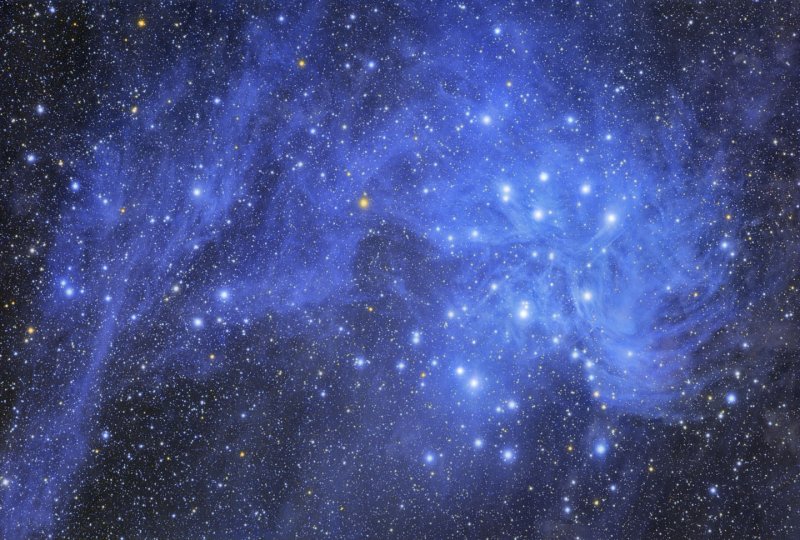Credit & Copyright: Tony Hallas
Explanation:
Hurtling through a cosmic dust cloud a mere 400 light-years away,
the lovely Pleiades
or Seven Sisters star cluster is well-known for its striking blue
reflection nebulae.
This remarkable wide-field (3 degree)
image of the region
shows the famous star cluster at the right, while
highlighting lesser known
dusty reflection nebulae nearby, across an area
that would span over 20 light-years.
In this case, the sister stars and
cosmic dust clouds
are not related, they just happen to be passing through
the same region of space.
But astronomers using infrared detectors
have recently found a
dusty disk that really does belong to one young
Pleiades star -- HD 23514.
Surrounding HD 23514, the disk is estimated to be comparable in
size to the terrestrial planet zone in our own
solar system
and likely represents the
debris from the process
of rocky planet formation.
1999 2000 2001 2002 2003 2004 2005 2006 2007 2008 2009 2010 2011 2012 2013 2014 2015 2016 2017 2018 2019 2020 2021 2022 2023 2024 2025 |
Yanvar' Fevral' Mart Aprel' Mai Iyun' Iyul' Avgust Sentyabr' Oktyabr' Noyabr' Dekabr' |
NASA Web Site Statements, Warnings, and Disclaimers
NASA Official: Jay Norris. Specific rights apply.
A service of: LHEA at NASA / GSFC
& Michigan Tech. U.
|
Publikacii s klyuchevymi slovami:
pleiades - reflection nebula - open cluster - otrazhatel'nye tumannosti - Pleyady - pylevoi disk - Pylevaya tumannost'
Publikacii so slovami: pleiades - reflection nebula - open cluster - otrazhatel'nye tumannosti - Pleyady - pylevoi disk - Pylevaya tumannost' | |
Sm. takzhe:
Vse publikacii na tu zhe temu >> | |
